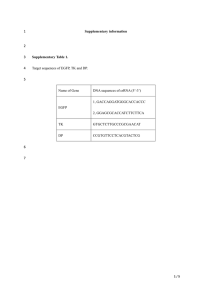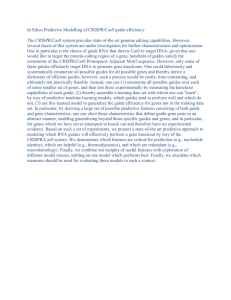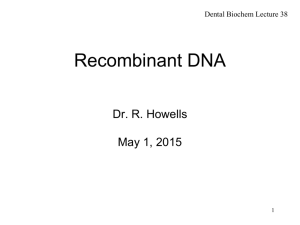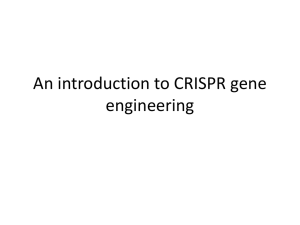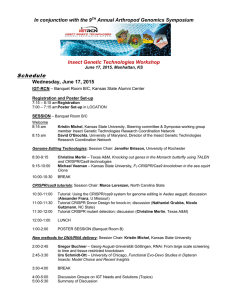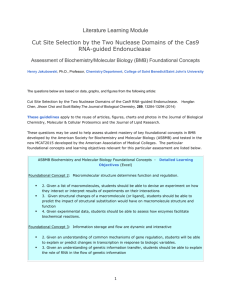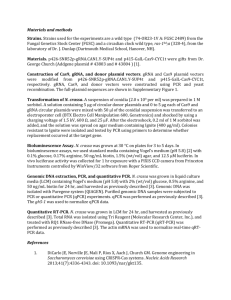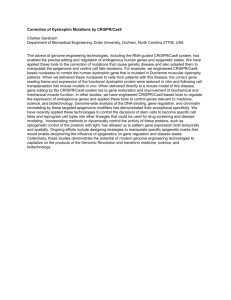Discussion Questions
advertisement
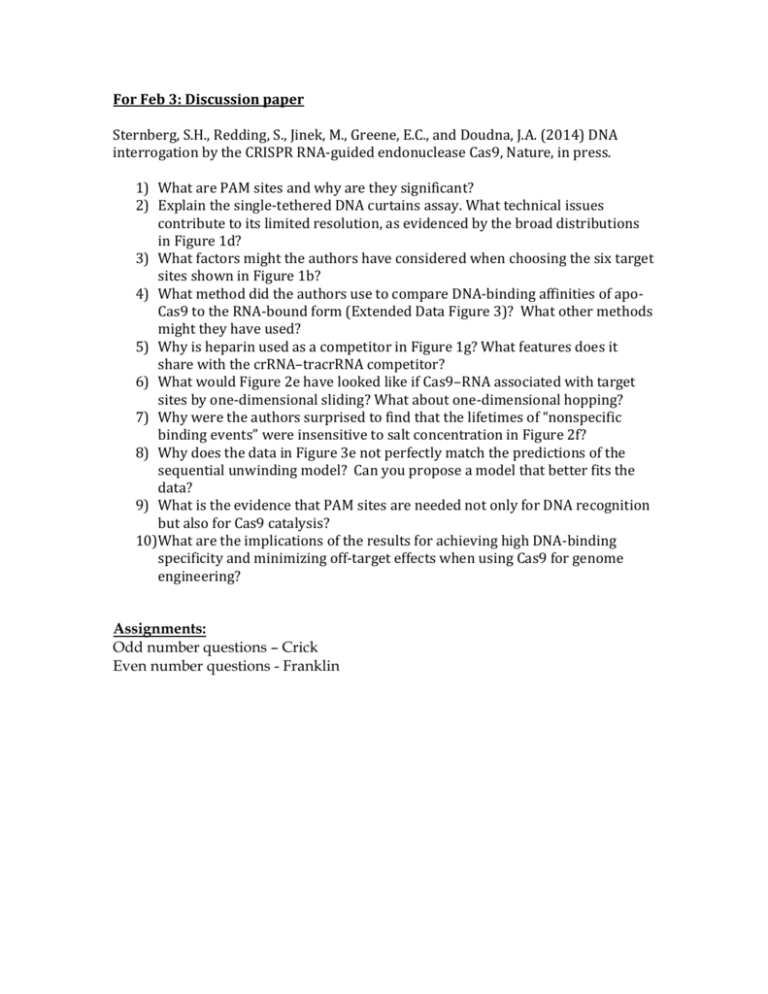
For Feb 3: Discussion paper Sternberg, S.H., Redding, S., Jinek, M., Greene, E.C., and Doudna, J.A. (2014) DNA interrogation by the CRISPR RNA-guided endonuclease Cas9, Nature, in press. 1) What are PAM sites and why are they significant? 2) Explain the single-tethered DNA curtains assay. What technical issues contribute to its limited resolution, as evidenced by the broad distributions in Figure 1d? 3) What factors might the authors have considered when choosing the six target sites shown in Figure 1b? 4) What method did the authors use to compare DNA-binding affinities of apoCas9 to the RNA-bound form (Extended Data Figure 3)? What other methods might they have used? 5) Why is heparin used as a competitor in Figure 1g? What features does it share with the crRNA–tracrRNA competitor? 6) What would Figure 2e have looked like if Cas9–RNA associated with target sites by one-dimensional sliding? What about one-dimensional hopping? 7) Why were the authors surprised to find that the lifetimes of “nonspecific binding events” were insensitive to salt concentration in Figure 2f? 8) Why does the data in Figure 3e not perfectly match the predictions of the sequential unwinding model? Can you propose a model that better fits the data? 9) What is the evidence that PAM sites are needed not only for DNA recognition but also for Cas9 catalysis? 10)What are the implications of the results for achieving high DNA-binding specificity and minimizing off-target effects when using Cas9 for genome engineering? Assignments: Odd number questions – Crick Even number questions - Franklin

